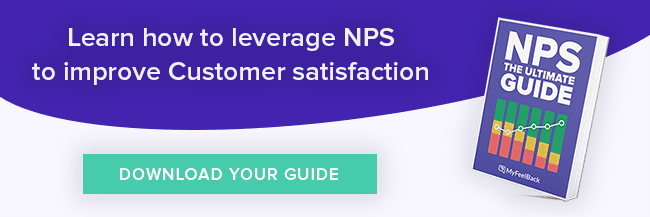So you took the advice of our previous blog posts telling you how useful NPS surveys are and decided to conduct one yourself. Congratulations! You are on your way to better customer relations and creating a better customer experience. But before you can reap the benefits of the NPS survey, there are a few steps...
So you took the advice of our previous blog posts telling you how useful NPS surveys are and decided to conduct one yourself. Congratulations! You are on your way to better customer relations and creating a better customer experience. But before you can reap the benefits of the NPS survey, there are a few steps you need to take in order to convert that data into meaningful progress for your company. This blogpost takes you through the process of handling your NPS data after you collect it, how to give your promoters, passives, and detractors recognition for where they are in your customer journey and opportunities to build more positive, meaningful relationships with you.


The NPS Survey: A rank of 9-10 makes a promoter, 7-8 are passive, and 6 and below are detractors.
Contextualize your findings
The first thing you want to do as soon as all of your data is collected is to contextualize your findings. When most people get their NPS survey responses back, they usually sort the answers into promoters, passives, and detractors, and then celebrate or panic accordingly. The reality is, there is a lot more depth to the NPS survey responses than simply finding out how many people like or hate your company. Taking the time to contextualize your information will give you a lot more knowledge, and help you to reel in your emotional response to the survey results-whether good or bad.
The first way you want to contextualize your results is by lifespan of the customer. Who are your main promoters? Are they lifelong clients who have been with you for years, or newbies who signed up last month? For help determining your customer’s lifetime value, check out this post.
Are your detractors old customers who are frustrated with how things are changing, or new customers that expect a better customer service department? Answering the question of what kind of customer is rating you in what way will give you huge insight into what aspects of your customer experience are working, and which ones need help.
Another way to contextualize your data is by comments. Think of it as adding a “why” level to your rankings. You can categorize your high raters by what makes them love your company, and do the same for retractors. Once you do this, it will be clear to see what specific aspects of your company are the most and least successful, giving you a launchpad for making new changes.
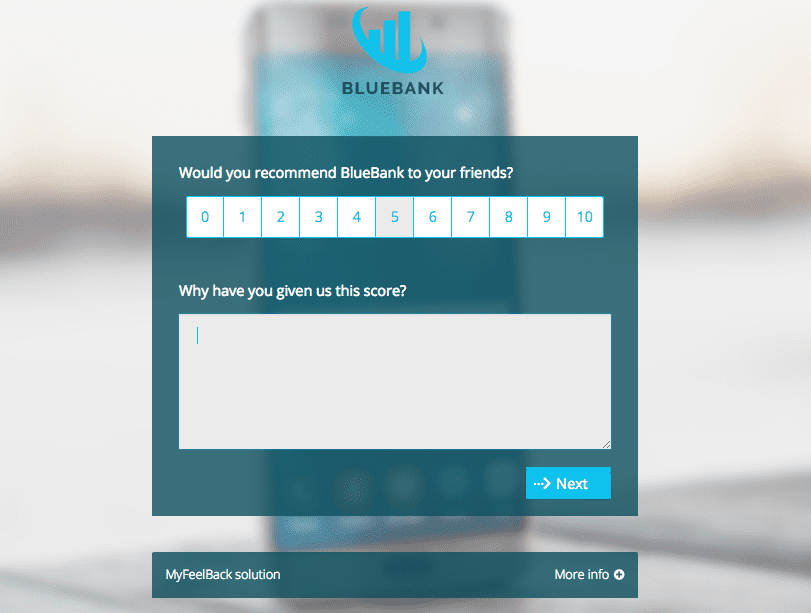
Click here to discover the Ultimate Guide about Net Promoter Score!
Segment your outreach based on category
Once you have your data properly contextualized and you have reviewed all of the comments, the next step in the process is to segment your outreach initiatives based on your different respondents. Software like MyFeelBack allows you to send out automated outreach emails to your customers that are segmented by their specific responses and actions. This is the kind of specificity you need in order to reach out to your respondents in a way that acknowledges their attitudes on your company.
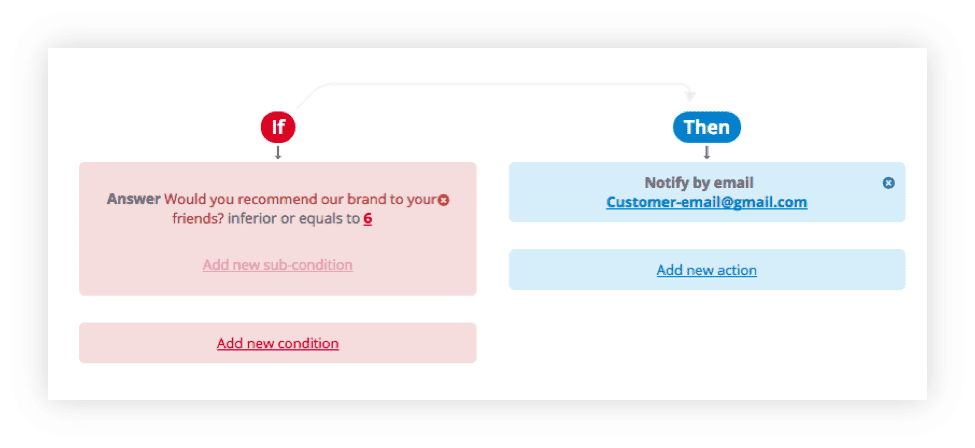
MyFeelback allows you to send out different responses based on your customer’s actions.
For the promoters, a great idea is to send out a reward club membership, allowing them to join, earn points, win prizes, and get discounts. This is a great way to thank them for their business and positive remarks, while further building their loyalty at the same time. Another good idea is to include a referral program, where your promoters win discounts for referring friends. This will help them begin acting as a brand ambassador for your company, which is your ultimate goal.
For your passives, a good idea is to use your outreach to build trust and foster engagement. Now is not a great time to push a heavy sell, so a better idea is to send out an email featuring some of your trust-building blog posts that are both informative and entertaining. This will help promote an emotional attachment to your company and hopefully solve some of your customer’s pain points through educating them with your content.
For detractors, the best option is to reach out to them with an acknowledgement of their dissatisfaction with the company, and a questionnaire of how they would like you to improve. This survey could have the following questions:
- What is the number one thing we could do to improve your ranking of our company?
- What do you hope to get out of your relationship with our company?
- What traits make a company valuable to you?
- What would help making using our product or service easier?
- What section of our company do you find is the most difficult to work with? Product | Customer Service | Maintenance | Billing | Other
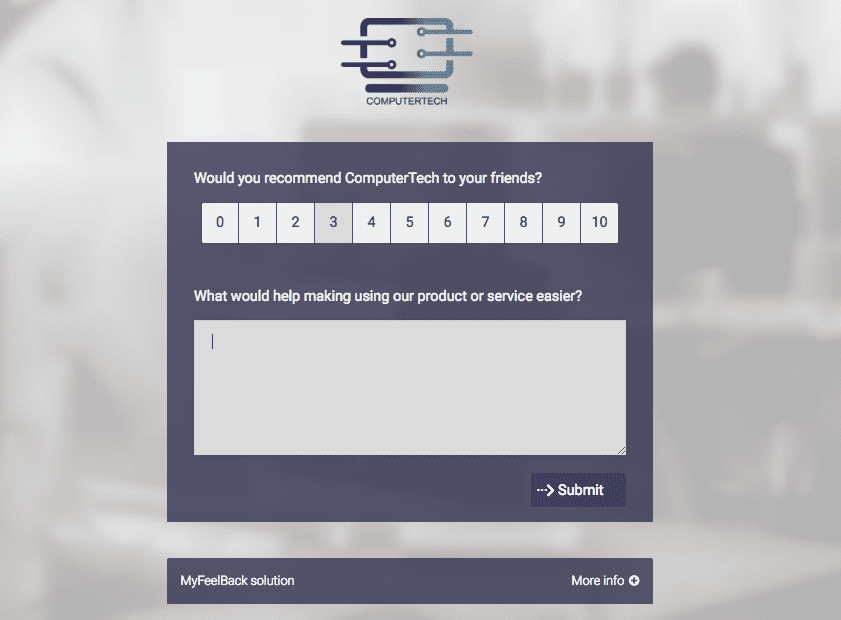
This type of initiative is usually very well received, especially when the detractors observe their critiques being converted into action over time. You can also send out promotional deals, coupons, or other rewards to make them feel valued. When it comes to your detractors, the absolute most important thing is that you solve the problems they revealed to you. This is really where the difference between a successful NPS survey and a failed NPS survey lies; not in how many detractors you have, but how many you turn into promoters over time.
Rinse and Repeat
The last thing you need to do after completing an NPS survey is to set up another time to do it again!
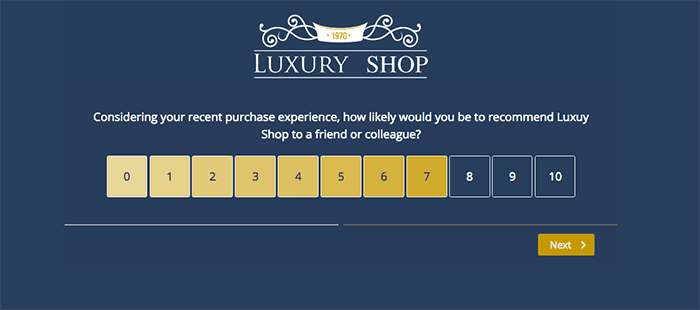
You will never know if your efforts to reward promoters, engage passives, and convert detractors were successful unless you regularly survey your customers to see how their experience develops over time. You don’t want to berate your customers with survey emails, but sending out an NPS every year, or even every quarter, is a great way to begin mapping your customer’s journey and satisfaction with your company over time.








